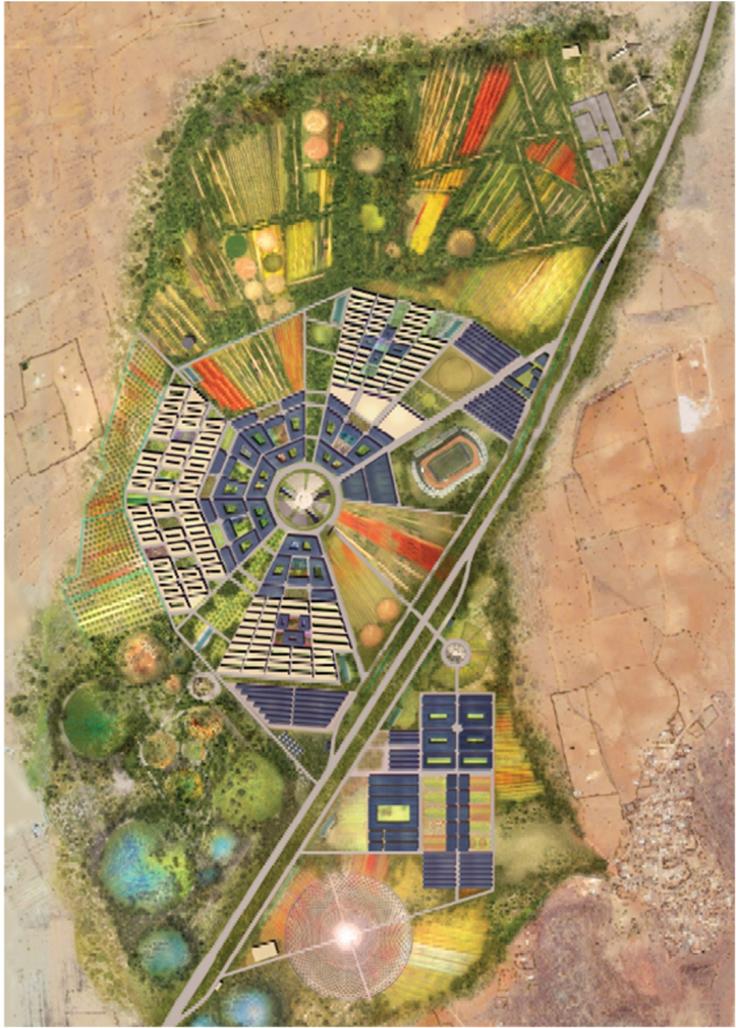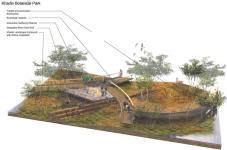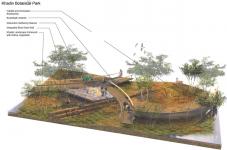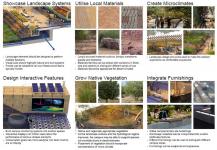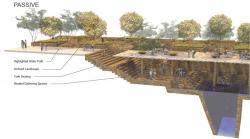“IIT Campus prescribes a new design vocabulary in campus architecture”
The design of the IIT, Jodhpur campus was conceptualized to establish an international brand and reinforce IIT’s reputation as a world education leader. The Campus Master Plan sets out to build a totally self-sufficient, green “oasis” and fountain of knowledge in the middle of Rajasthan’s Thar Desert.
Careful attention has been paid to the principles of shading, orientation and as well as water flow. The plan is compact, dense and low rise. Buildings shade each other, shade pathways, streets and courtyards shade themselves with overhangs, louvers and jaalis.
“The architects aspired to create a campus that acts as a living laboratory so that the students can learn various practices of sustainability while walking and being part of the campus.”
2012
Site Area – 850 Acres
Built-up Area – 8,07,518 Sq.m.
Cost of project – 3660 Crores ( Four Phases )
URBAN DESIGN PRINCIPLES FOR THE CAMPUS
The overarching planning concept is a radiating geometry that emanates from the central step-well amphitheatre at the very heart of the campus. This aims at linking the entire campus in a unifying gesture. A specific geometry is planned for the network of radiating streets and ring road. The intersection of this street system establishes five sectors.
Located within the boundaries of the sector are the courtyard building typologies for both the academic programme and hostel programme (hostels, faculty, and staff), each with their own unique architectural requirements in terms of massing, functionality, planning and elevation. The courtyard provides shade and a semi-private open space for relaxation, play and study.
The special organization is achieved by a logical, repetitive and integrated system of buildings, streets and open space each with their own system, interconnected by the spaces that they define. The streets define the sectors for the location of the building and the buildings define the courtyards and the open spaces.
The buildings essentially draw inspiration from the historic models of Jodhpur. The building mass both contains and forms the shaded open spaces. The building blocks are a maximum three storey high (15 meters), with the plans and the elevations governed by their use. All of the housing is based on a shaded “green” courtyard typology with shared open space at the centre. For the hostel programme, male and female students are located in separate buildings.
DEVELOPMENT PLAN
The campus master plan is to be constructed in various development phases. Landscape phasing will be completed in parallel with the infrastructure and building construction. Since many projects will be completed simultaneously on the campus, the campus site and landscape phasing will include protecting the soils and vegetation, as well as work in concert with building construction, to reduce congestion during partial occupancy.
The beauty of the master plan is that while it grows it retains its iconic and unique identity. The construction of the master plan is to be carried in four phases between the 2013 and 2025.
NET POSITIVE CAMPUS
The campus attains energy efficiency using passive, active and innovative design measures at both the building and master plan levels to provide even higher grades of efficiency, reduced energy footprint and improved occupant comfort to achieve a net positive energy campus. The approach to achieving a high performance design is attained through reduced energy demands of the building, meeting loads with high performance equipment and offsetting the energy consumption by using renewable energy.
The architects aim to embrace the traditional concepts of Jodhpur and combine them with the current cutting edge energy reduction technologies. Importance has been given to reduce the energy demands of the campus and then meeting them with very high performance equipment. Onsite renewable energy technologies are the final step in offsetting this energy consumption to achieve a net zero energy campus.
The hostel and residential zone of the campus is designed to maintain occupant comfort without the means of any active conditioning strategies. Air movement is induced through thermal labyrinths, which are located below the building, to provide cooler air to the hostels using passive cooling strategies. The education, administration and supportive zone of the campus is a fully conditioned zone which employs all of the passive design strategies, along with active HVAC measures to meet the higher cooling demand. These buildings will have high performance HVAC controls of temperature resets, outdoor air flow monitoring, and heat recovery among other strategies, to have a considerably lower footprint than a conventional building.
ARCHITECTURAL STRATEGIES
The academic zone
The academic zone buildings are designed and sized to provide a variety of spaces according to the program including classrooms and labs of varying sizes and proportions, faculty offices, meeting rooms and lounges. The interconnected stairs are extra wide to promote chance meetings and are located at the corners to maximize flexibility and efficiency. All three- storey high buildings contain a basement. Central courtyards for all building zones are one meter below street grade to allow light to penetrate into the basement level. The building’s basements are designed for lab use where daylight is not required, storage, mechanical rooms and labyrinth. Rooms are no greater than ten meters from a window to maximize daylight.
The buildings are designed to allow for natural ventilation. Jaalis have been traditionally used for light and air. Locally made precast concrete jaali screens will be used on the East-West facades of the academic building. Adjustable smart louvers are provided to screen the south façade of the academic building. All south facades facing the courtyard have a two meter overhang to allow for additional shading.
The hostel zone
The hostel buildings are designed with a double loaded corridor, with North-South facing rooms. The double loaded corridors also allow maintaining air circulation and service efficiency. The common spaces on various floors allow for interaction among students. The services are positioned amongst the East-West axis.
The Residential Zone
The housing is designed as a row housing typology where two units on each level share a common staircase and the other two share a common wall and a air shaft. Each building allows for a maximum of six units on each side of the courtyard. Each unit has a individual wind catcher that circulates cool air from the labyrinth beneath, during the day and extract hot air out at night. The windows are also staggered to provide for maximum shading and unit natural cooling.
Double glazed windows are used for all three blocks for both natural ventilation and views towards landscaped courtyard, plazas and parks.
LANDSCAPING
The landscape and architectural components of the campus are based on capturing, storing and using every drop of water from the monsoon. An integrated approach of the very latest innovative systems creates sustainable open spaces that in harmony with the setting, seasonal interest and microclimate. The strategy aims high optimization of de-desertification to produce high agricultural production and support a diversity of plant, livestock and wildlife. As the landscape evolves, and the hydrological regime improves, the campus may be able to support species, not normally found in desert climates.
Within the academic sector and residential “villages” of the campus, there are narrow shaded pedestrian streets for electric buses and bicycles. Specific courtyards and gathering spaces are designed to be served as outdoor classrooms. A variety of shaded building courtyards pocket “oasis-like” gardens and demonstration bio-filtration areas for the students. The academic sectors, the hostels, the faculty and staff housing “villages” utilize recycled grey and black water. Specific courtyards and gathering spaces are designed to be served as outdoor classrooms.
Locally sourced materials, appropriate for desert climate such as Jodhpur sandstone, granite and limestone are proposed for street paving. Hardscape materials are to be incorporated into custom landscape features, and different furnishings aim to distinguish different campus zones.
The ecosystem restoration and performance of the landscape will be monitored using different systems. Storm water quality and quantity will be monitored using a data acquisition system by individually containing the drains, identifying a collection point and tipping area. On a macro scale, the same system can be used to study water use across the different landscape typologies.
Design team - Prof. Charanjit S Shah (Founding Principal), Mr. Gurpreet S shah (Principal Architect), Frederic Schwartz.
Consultants – AECOM (MEP)
Landscape Consultant - Andropogan
